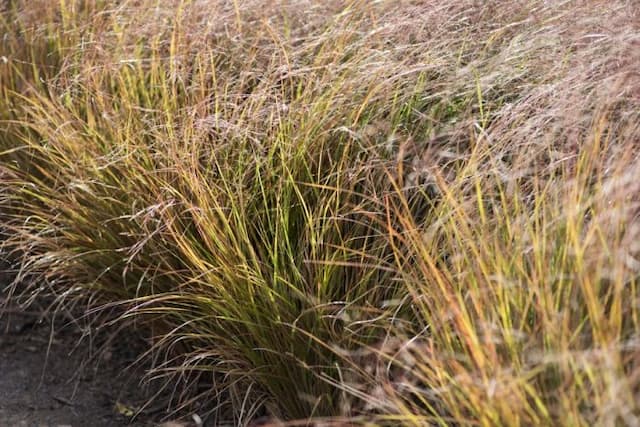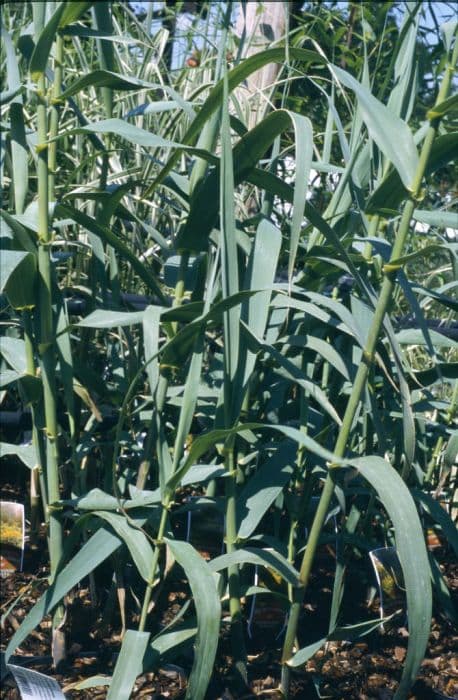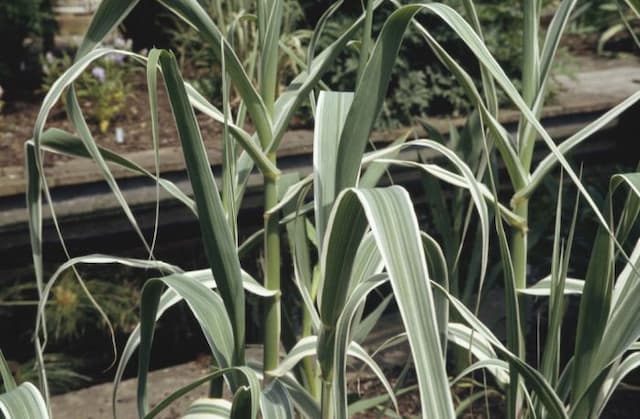Arrow bamboo 'Akebonosuji' Pseudosasa japonica 'Akebonosuji' (v)
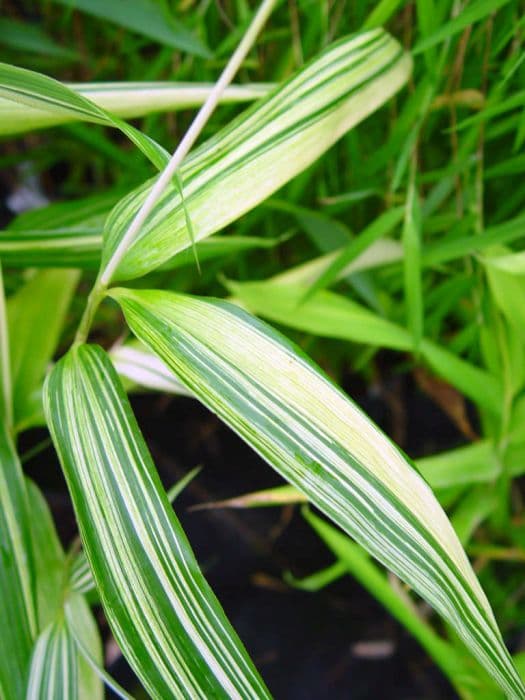
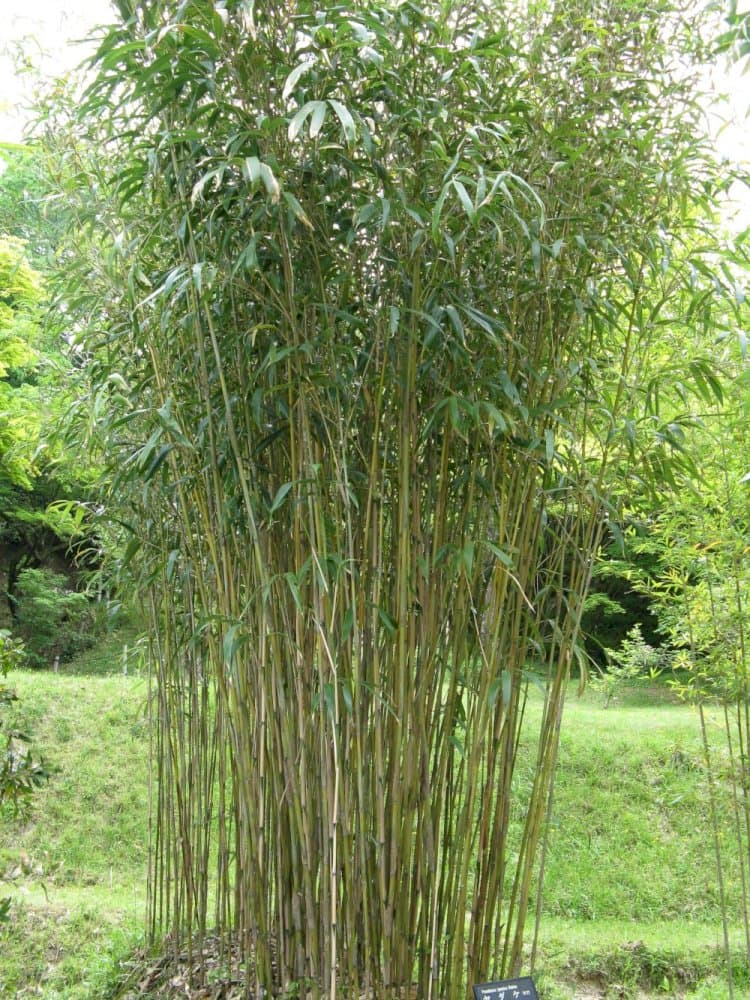
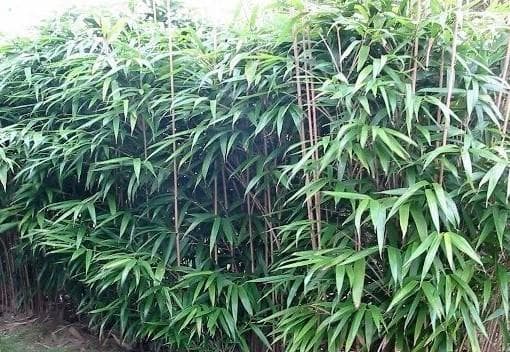
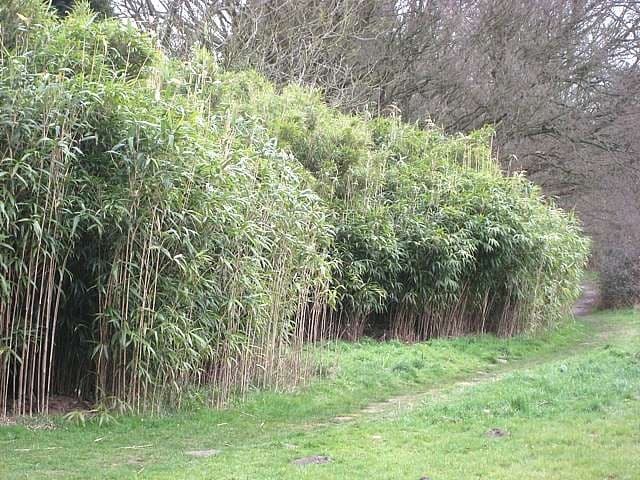
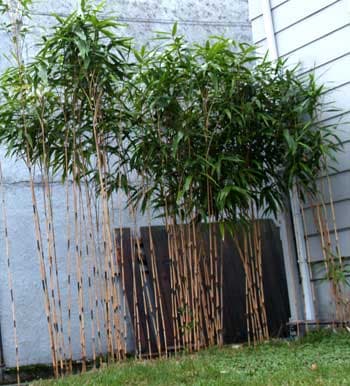
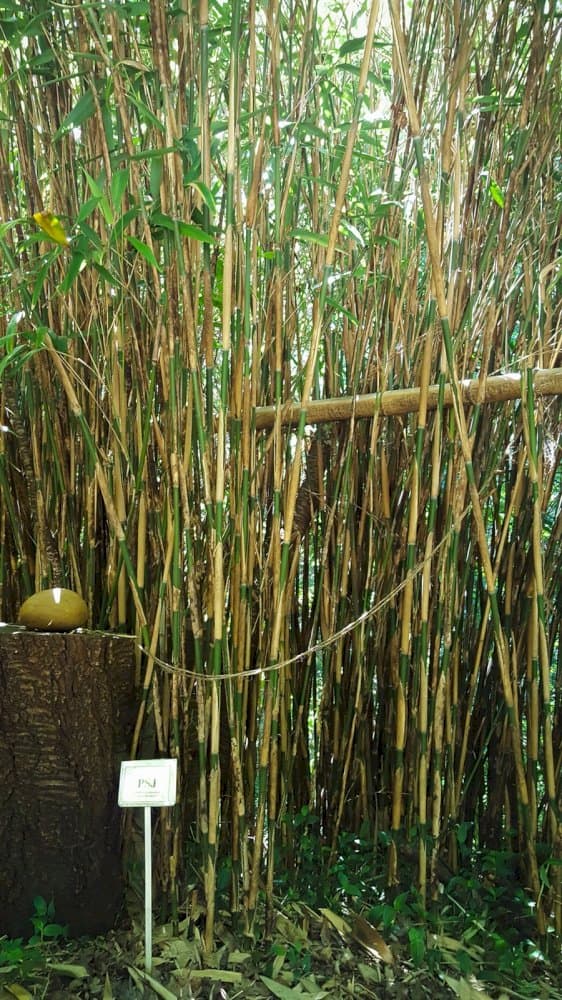
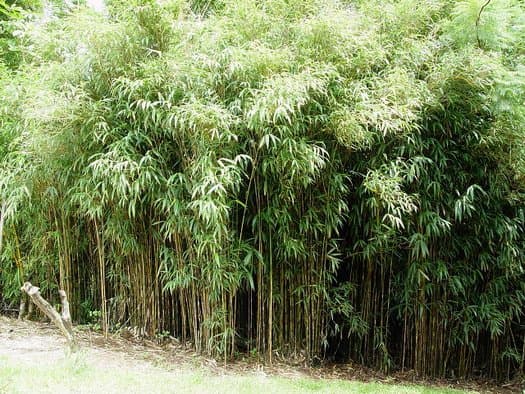
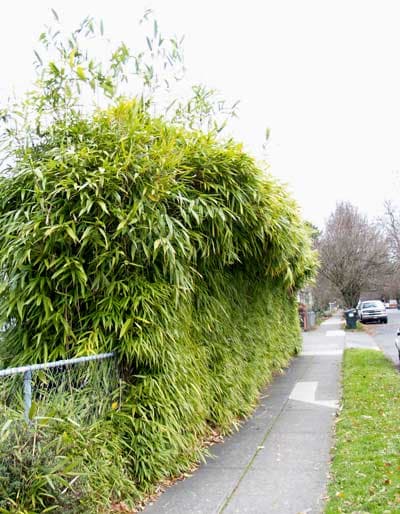
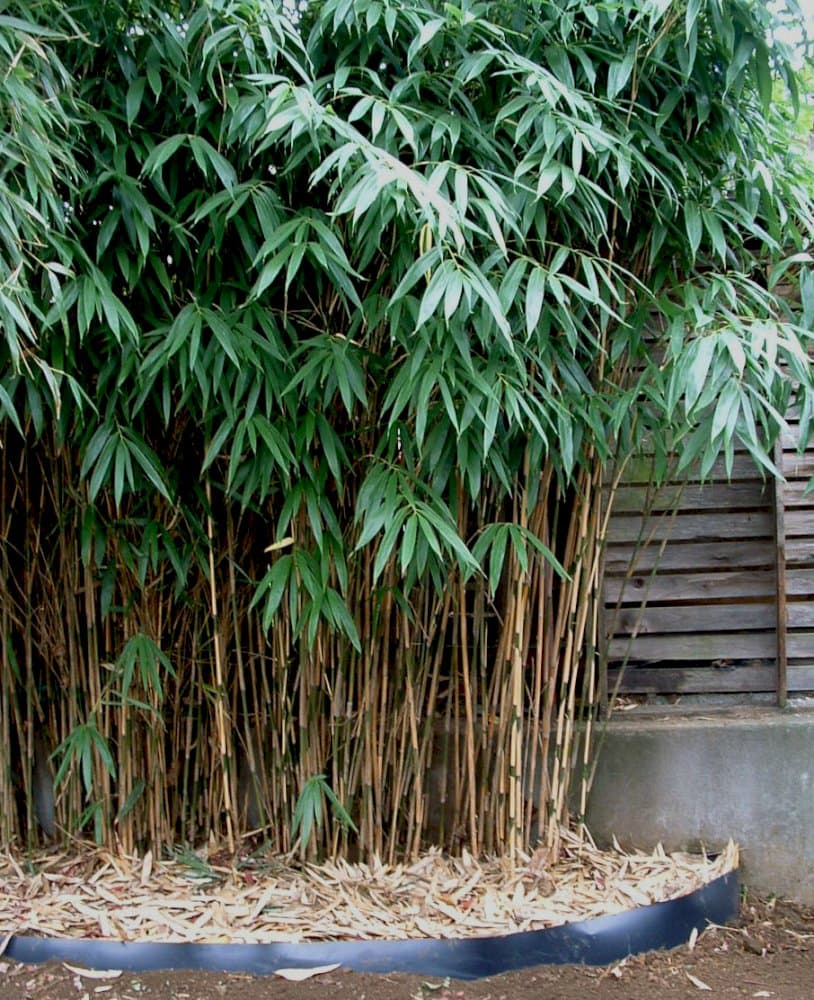
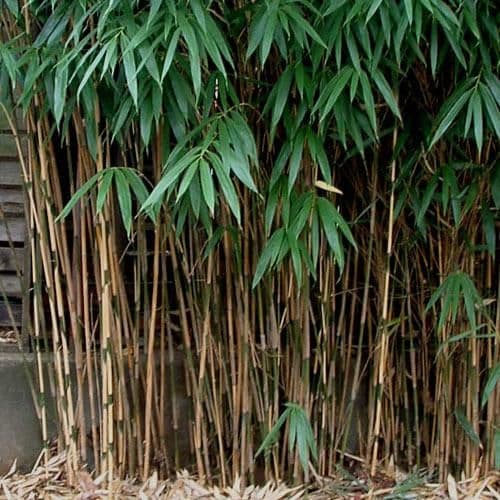
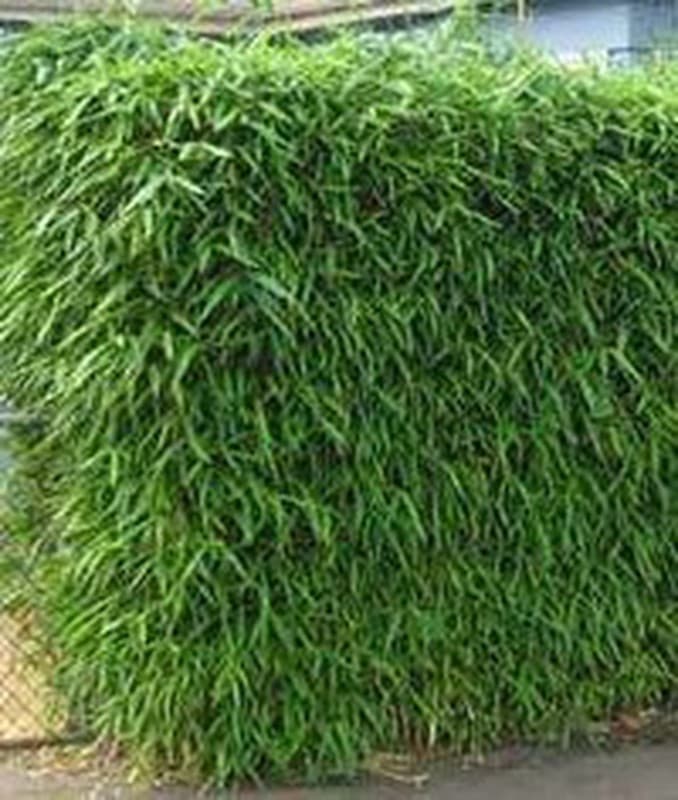
ABOUT
'Akebonosuji' is a vigorous bamboo forming a spreading clump of erect stems to 6m tall, bearing linear leaves to 30cm long, mostly striped with creamy-yellow, sometimes producing sports with all-yellow leaves
About this plant
 Names
NamesFamily
Poaceae.
Synonyms
Arrow Bamboo, Japanese Arrow Bamboo, Metake Bamboo, Yama-zasa.
Common names
Pseudosasa japonica 'Akebonosuji' (v).
 Characteristics
CharacteristicsLife cycle
Perennials
Foliage type
Evergreen
Color of leaves
Green
Height
10 feet (3.05 meters)
Spread
5 feet (1.52 meters)
Plant type
Bamboo
Hardiness zones
6
Native area
Japan
Benefits
 General Benefits
General Benefits- Ornamental Appeal: The striped variegation of leaves adds aesthetic value to gardens and landscapes.
- Privacy Screen: With its dense growth habit, it can serve as a natural privacy screen.
- Erosion Control: The robust root system helps in preventing soil erosion on slopes and banks.
- Wildlife Habitat: Provides shelter and food for various species of birds and insects.
- Low Maintenance: It is relatively easy to care for, requiring minimal maintenance once established.
- Drought Tolerance: Once established, it can tolerate periods of drought with less frequent water requirements.
- Sound Barrier: The dense foliage can help reduce noise pollution.
- Windbreak: Acts as a windbreak, protecting other plants and reducing wind speeds in gardens.
- Adaptability: Can thrive in a variety of soil types and conditions.
- Fast Growth: Rapid growth rate allows for quick establishment and visual impact.
 Medical Properties
Medical PropertiesThis plant is not used for medical purposes.
 Air-purifying Qualities
Air-purifying QualitiesThis plant is not specifically known for air purifying qualities.
 Other Uses
Other Uses- Arrow–Shaft Material: In some cultures, the hard and straight canes of Arrow Bamboo may be used to create arrows for traditional archery.
- Instrument Construction: The culms are sometimes utilized in the making of musical instruments such as flutes or even didgeridoos.
- Garden Stakes: The strong and durable poles provide excellent support for climbing plants or as stakes in vegetable gardens.
- Privacy Screens: Planted in a row, Arrow Bamboo can create a dense and fast-growing screen for privacy in residential areas.
- Windbreaks: Its dense growth habit makes it suitable for protecting smaller plants from strong winds when planted as a shelterbelt.
- Living Fences: The culms can be planted closely to form a natural and living fence that can be trimmed to desired shapes and heights.
- Craft Material: The wood of Arrow Bamboo is often used in crafting various items such as frames, baskets, and decorative items.
- Water Features: The hollow stems can be used to create traditional Asian water features that provide a tranquil sound of dripping water.
- Path Edging: Shorter sections of the cane can serve as an attractive and natural edge for garden paths and walkways.
- Fishing Poles: In some cultures, the lightness and flexibility of the Arrow Bamboo canes make them suitable for fashioning into simple fishing rods.
Interesting Facts
 Feng Shui
Feng ShuiArrow bamboo can be used in Feng Shui to introduce a sense of growth and upward energy, symbolizing prosperity. It can be placed in the east sector of a home or garden to promote health and family harmony, or in the southeast to attract wealth and abundance.
 Zodiac Sign Compitability
Zodiac Sign CompitabilityArrow bamboo is not used in astrology practice.
 Plant Symbolism
Plant Symbolism- Resilience: Arrow Bamboo, known for its sturdy and flexible canes, symbolizes resilience, as it can bend without breaking even in strong winds.
- Versatility: Given its wide range of uses in crafts, gardening, and construction, Arrow Bamboo represents adaptability and utility in various aspects of life.
- Growth: As a quickly growing plant, Arrow Bamboo embodies rapid growth and the idea of striving for continuous improvement and reaching new heights.
- Good Fortune: In many Asian cultures, bamboo is considered a symbol of good luck, and thus Arrow Bamboo could be seen as a bearer of prosperity and success.
- Peace: The gentle rustling sound of bamboo leaves in the wind can evoke a sense of calm and tranquility, making Arrow Bamboo a symbol of peace and serenity.
- Longevity: Bamboo plants are renowned for their long lifespan. Arrow Bamboo is no exception, symbolizing endurance and the ability to overcome challenges over time.
 Water
WaterArrow Bamboo should be watered deeply and allowed to dry slightly between waterings, usually about once a week depending on climate and soil conditions. The plant prefers consistent moisture but does not tolerate standing water. During the active growing season in spring and summer, it may require watering two to three times per week. Provide approximately two gallons of water per plant for each watering, ensuring water penetrates the soil to reach the root zone. Reduce watering in the cooler months to prevent root rot and adjust according to rainfall.
 Light
LightArrow Bamboo thrives in a spot with partial shade to full sun exposure. It is tolerant of a range of light conditions but should be protected from the intense, hot afternoon sun in warmer climates to prevent leaf scorch. The ideal location would provide morning sunlight with some dappled shade in the afternoon, maintaining the vibrant colors of the leaves.
 Temperature
TemperatureArrow Bamboo can survive temperatures as low as 5 degrees Fahrenheit and as high as 95 degrees Fahrenheit, making it quite hardy. The ideal temperature range for this plant is between 30 degrees and 80 degrees Fahrenheit. It is important to provide a mulch layer to protect the roots in areas with severe winter temperatures.
 Pruning
PruningArrow Bamboo should be pruned to maintain its shape, remove any dead or damaged canes, and encourage new growth. Pruning is best done in the late winter or early spring before new shoots emerge. Cut canes at ground level for a cleaner look and to stimulate new shoots. Thin the clumps every few years to prevent over-crowding. Pruning once a year is usually enough to keep the bamboo healthy and attractive.
 Cleaning
CleaningAs needed
 Soil
SoilArrow Bamboo prefers a well-draining soil mix rich in organic matter. The best mix would contain garden soil, compost, and perlite or sand to improve drainage. Aim for a soil pH between 5.5 and 7.0 for optimal growth.
 Repotting
RepottingArrow Bamboo should be repotted when it outgrows its container, which can be every 2-3 years. Monitor root growth and repot in the spring for best results.
 Humidity & Misting
Humidity & MistingArrow Bamboo thrives in moderate to high humidity levels, ideally between 40% and 60%. Avoid placing it in overly dry environments to maintain its health.
 Suitable locations
Suitable locationsIndoor
Place in bright, indirect light and water well.
Outdoor
Plant in partial shade, ensure soil drainage.
Hardiness zone
6-10 USDA
 Life cycle
Life cycleArrow Bamboo 'Akebonosuji' (Pseudosasa japonica 'Akebonosuji' (v)), like other bamboo species, begins its life as a seed, although it's commonly propagated through division or culm cuttings to maintain its variegated pattern. After germination, it enters a phase of rapid vegetative growth, where shoots develop into tall, woody culms with distinctive green and yellow-striped leaves. As the bamboo matures, it forms dense clumps, with new shoots emerging from the ground each growing season, a process that can be especially vigorous in the spring. Over several years, these clumps can become quite large, and the plant may need to be divided to manage its size and promote healthy growth. Arrow Bamboo is a monocarpic plant, meaning it flowers infrequently; flowering cycles can range from several decades to more than a century, and after flowering, the bamboo typically dies. However, since flowering is rare and unpredictable, most of the life of Arrow Bamboo 'Akebonosuji' is spent in the vegetative stage, where it provides a lush, evergreen presence in the landscape.
 Propogation
PropogationPropogation time
Spring-Early Summer
Pseudosasa japonica 'Akebonosuji', commonly known as Variegated Arrow Bamboo, is typically propagated through division. The most popular method involves separating the rhizomes, which are the underground stems from which the shoots emerge. This is ideally done in the spring, just as new growth begins. During division, a segment of the rhizome with at least one or two growing points, or 'culms', should be carefully excavated. It is important to use a sharp spade or knife to separate the rhizome from the main plant. Once separated, the rhizome can be planted in a pot with well-draining soil or directly into the ground at the same depth it was growing originally. Adequate watering and protection from direct sunlight are essential until the new plant establishes.
